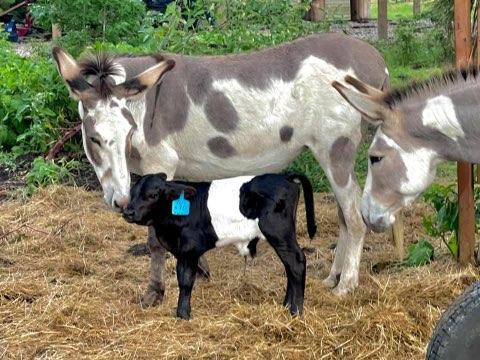Everyone has heard of guard dogs for protection, but guard donkeys? It is the latest method cattle ranchers are using to help deter coyotes from grabbing calves from their herds.
Even though this form of protection has been around for many years, it is making a resurgence on ranches around the country. Referred to as “guard donkeys” these beasts of burden are becoming an important tool for farmers and ranchers to ward off predatory animals such as the coyote to protect their vulnerable calves.




